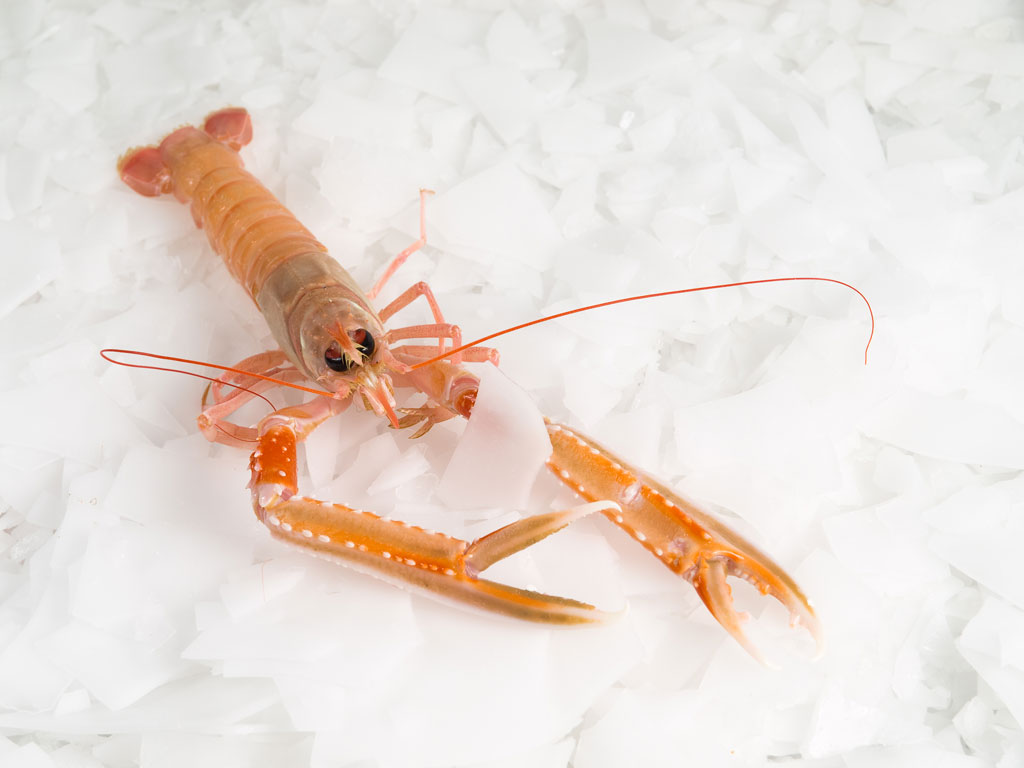
Škampi
lat. Nephrops norvegicus
Škampi
Shrimps are present in the Mediterrannean and Adriatic. The largest populations have been reported to be around Jabuka island, Velebit pasage and Kvarner. Due to climate, cleanness of the sea and temperature that allows the development of a thinner carapace and smaller muscle tissue Adriatic shrimps are highly praised. They inhabit shallow waters and are caught by traps not to destroy the gentle tissue as it frequently happens with the trawling net.
Shrimp has an oblong, slender and laterally flattened pink to pale orange body.Tthe head and the thorax are comprised while the abdomen is long and segmented, ending in a broad tail fan. From the lower thorax grow legs bearing claws that have ridges of spines on the sides.
Energy and nutritional value
Energy value of 100g of fresh shrimps is 91 kcal/381 kj of what 0.5% are carbohydrates, 1.9 % is fat and 16.9% proteins.
Minerals contained in shrimps: phosphorus (205 mg), potassium (185 mg), calcium (52 mg), magnesium (37 mg), iron (2.4 mg), zinc (1 mg), copper (0.3 mg), selenium (38 mcg).
Vitamins contained in shrimps: B vitamin complex –thiamine (0.03 mg), riboflavin (0.03 mg), niacine (2.5 mg), panthotenonic acid (0.3 mg), vitamin B6 (0.1 mg) and choline (81 mg).
Shrimps are also a source of omega 3 fatty acids- in 100g of fresh shrimps there is 0.2 g DHA (docosahexaenoic acid) and 0.3 g EPA (eicosapentaenoic acid).









